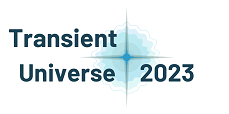Speaker
Description
Feature extraction is one of the crucial stages in trying to apply machine learning to tasks on real astronomical data. In particular, when dealing with transients where light-curves are sparsely sampled, with varying numbers of points and in the presence of uncertainties. One of the standard methods to extract features from a light curve is to find the best fit parameter values to a particular parametric equation and use them as features. Typically the telescope's measurements are taken with different filters and therefore the previous operation is repeated for each of them. The collection of all minimized parameters over all filters constitutes a complete feature set describing the object. This approach has the advantage of completely describing the phenomena in a computational quick manner, but it has several drawbacks. First the number of features scales directly with the number of filters. Then, each filter must contain enough data points for the fit to be mathematically constrained. If even one filter is lacking measurements, the feature extraction won’t be computable. Finally, an independent fit of each filter results in very correlated features, and completely ignores constraints from one filter to another. In order to solve all these problems, we propose the RAINBOW framework. It is a feature extraction method that uses a single three dimensional parametric equation instead of a collection of two dimensional parametric equations. By adding wavelength as an input,we ensure that the whole object is fitted at once, independently of the number of filters. The function itself is based on the blackbody equation, includes a phenomenologically motivated combination of exponentials to represent the bolometric flux and a sigmoid-like temperature evolution hypothesis. We demonstrate the efficiency of RAINBOW on SN-like objects from the PLASTiCC Kaggle challenge. Based on a complete benchmark including goodness of fit estimation, maximum peak time prediction and classification exercises, we show that the method is consistently better than the traditional approach, while offering a denser and more physically meaningful feature extraction. This represents a significant improvement in our ability to extract meaningful information from partial data from astronomical transients.

